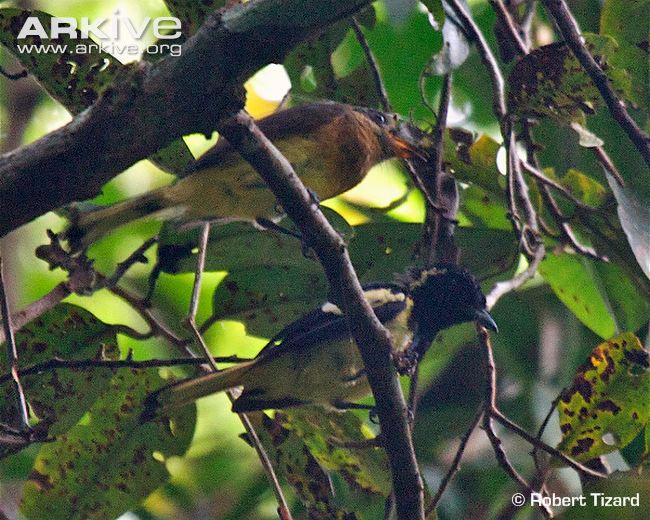
Monarcha brehmii
TAXONOMY
Monarcha brehmii Schlegel, 1871, Biak Island, New Guinea.
OTHER COMMON NAMES
French: Monarche de Brehm; German: Falbschwanzmonarch;
Spanish: Monarca Biak.
PHYSICAL CHARACTERISTICS
5.2 in (13 cm). One of the smallest monarchs. Males have
black upperparts, throat, and breast, with pale yellow underparts,
tail, and wing bars. Along with a short crest, its most significant
feature is pale yellow crescent on each side of the
head. Females similar, but have a whitish patch on throat and
breast.
DISTRIBUTION
Endemic to the islands of Biak and Supiori in Cenderawasih
(Geelvink) Bay, Papua (formerly Irian Jaya) in Indonesia.
HABITAT
The few birds found were in lowland forest, but it is suspected
that they favor thick, elevated forests. The rainforests of Biak are
very important for wildlife, with 13 endemic or near-endemic
birds, 18 endemic butterflies, and five endemic mammals.
BEHAVIOR
Few individuals have been seen, so little is known. Its grating
call is characteristic of the Monarchidae.
FEEDING ECOLOGY AND DIET
Appear to gain most of their insect food by gleaning from foliage
in the subcanopy of the forest, and by hawking aerial insects
from a perch.
REPRODUCTIVE BIOLOGY
Not known.
CONSERVATION STATUS
Listed as Endangered by the IUCN and BirdLife International,
with a declining and small population. Recorded only
four times between 1980 and 2000, though there have been no
recent expeditions to the interior forests, where it may be
more common. Logging for timber and clearing the land for
farming has already destroyed the primary forest in southern
Biak and threatens the northern areas. Fortunately, Supioro’s
forests are steeper, with fewer people, and so at lower risk.
New expeditions to find and protect the most important areas
of forest are a priority for their conservation.
SIGNIFICANCE TO HUMANS
None known.
Other popular Animals
Photo Gallery of - Biak monarch




 Animalia Life
Animalia Life